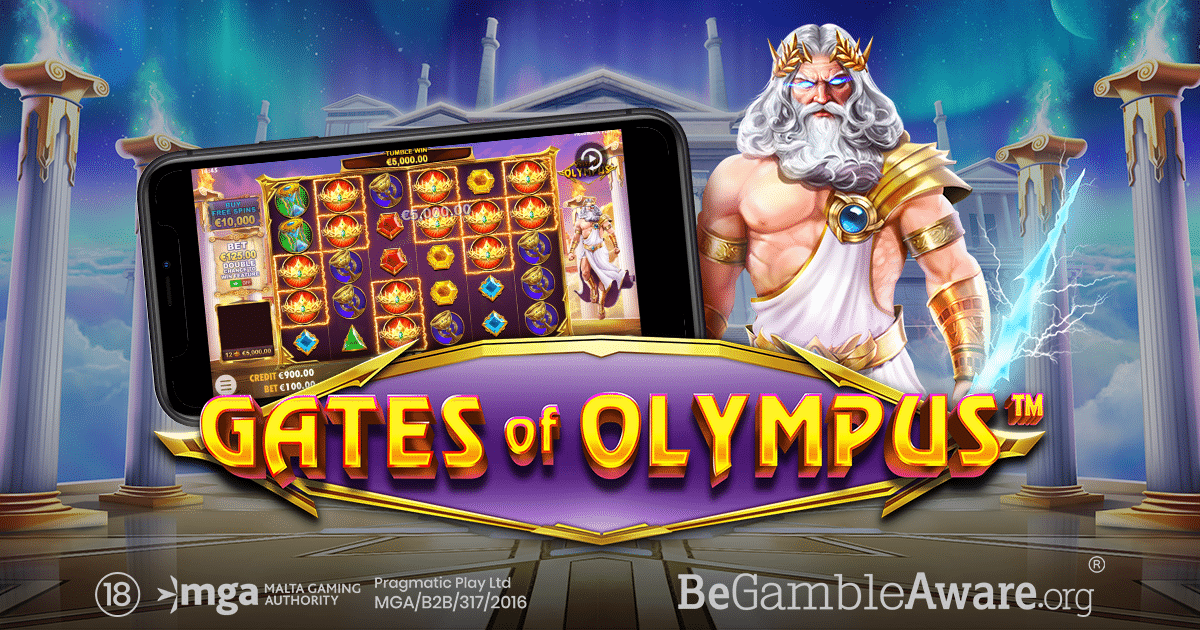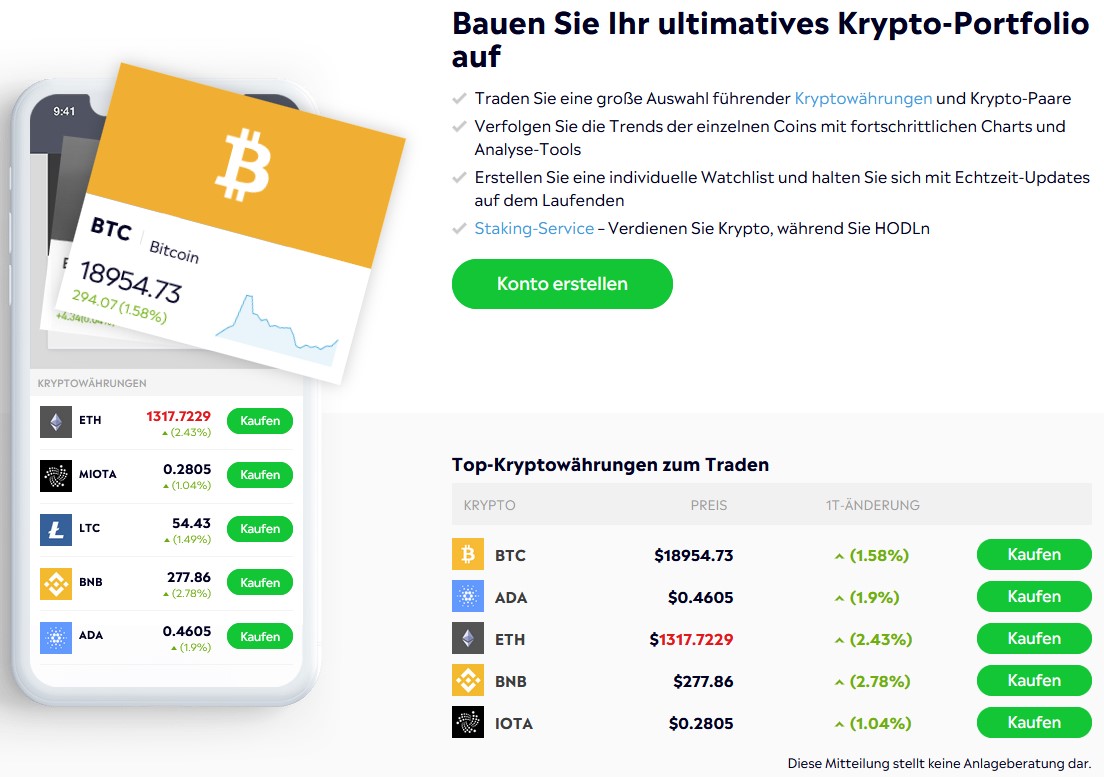
Μπορεί να μην γνωρίζετε ότι το Leon Casino παρέχει μια σειρά από ζωντανές προτάσεις σχεδιασμένες ειδικά για τα αγαπημένα σας παιχνίδια. Από ελκυστικά μπόνους καλωσορίσματος μέχρι διαρκείς εβδομαδιαίες προσφορές, υπάρχει κάτι για καθένα. Είτε είστε νέος είτε βετεράνος παίκτης, αυτές οι προτάσεις μπορούν να ενισχύσουν σημαντικά την εμπειρία παιχνιδιού σας. Σκέφτεστε πώς να μεγιστοποιήσετε τα κέρδη σας και να απολαύσετε μοναδικές ανταμοιβές; Ανακαλύψτε τις ενδιαφέρουσες προτάσεις που σας περιμένουν στο Leon Casino.
Κύρια μαθήματα που αντλήθηκαν
Το Leon Casino προσφέρει ενδιαφέρουσες προσφορές για παιχνίδια με ζωντανό ντίλερ, ενισχύοντας την αίσθηση παιχνιδιού με ξεχωριστά μπόνους για γνωστά παιχνίδια όπως το μπλακτζάκ και η ρουλέτα.
Λάβετε μέρος σε ζωντανές στοιχηματικές εκδηλώσεις για να κερδίσετε επιβραβεύσεις και επιστροφή μετρητών, αυξάνοντας σημαντικά τις ευκαιρίες σας να κερδίσετε.
Συχνά τουρνουά και διαγωνισμοί προσφέρουν χρηματικές ανταμοιβές, δωρεάν συμμετοχές και πολυτελή έπαθλα για μια ποικιλία παιχνιδιών, συμπεριλαμβανομένων τουρνουά κουλοχέρηδων και πόκερ.
Οι προτάσεις μεθόδων πληρωμής ενσωματώνουν ελκυστικά μπόνους και εξαιρέσεις από χρεώσεις συναλλαγών για να μεγιστοποιήσετε το κεφάλαιό σας για τις ζωντανές σας περιπέτειες παιχνιδιών.
Παρακολουθήστε στη σελίδα προσφορών για τις πιο πρόσφατες ζωντανές προσφορές και εποχιακά μπόνους, σχεδιασμένα για να ενισχύσουν την εμπειρία παιχνιδιού σας.
Επισκόπηση ζωντανών προτάσεων του Leon Casino
Όταν ανακαλύπτετε τον συναρπαστικό κόσμο των ζωντανών προτάσεων του Leon Casino, θα ανακαλύψετε μια σειρά από επιλογές που έχουν σχεδιαστεί για να ενισχύσουν την εμπειρία παιχνιδιού σας.
Η συμμετοχή σε ζωντανά στοιχήματα προσθέτει στον πάθος και το Leon Casino υπόσχεται ότι θα ανταμειφθείτε σε κάθε σας βήμα. Με ποικίλες προωθητικές εκδηλώσεις, μπορείτε να επωφεληθείτε από μπόνους που θα αναβαθμίσουν το παιχνίδι σας.
Είτε πρόκειται για εκπτώσεις επιστροφής μετρητών είτε για βελτιωμένες αποδόσεις σε ζωντανά στοιχήματα, αυτές οι ευκαιρίες διατηρούν τον πάθος ζωντανό και τις πιθανότητές σας να νικήσετε μεγάλες.
Θα διαπιστώσετε ότι η εμπλοκή σε αυτές τις εκδηλώσεις όχι μόνο βελτιώνει την αίσθηση παιχνιδιού σας, αλλά σας παρέχει και την ευκαιρία να κερδίσετε πολλά.
Μπόνους υποδοχής για καινούργιους παίκτες
Το Leon Casino όχι μόνο προσφέρει ενδιαφέρουσες live προσφορές, αλλά παρέχει και ένα δελεαστικό μπόνους καλωσορίσματος για καινούργιους παίκτες που δεν θα θέλετε να παραλείψετε. Όταν εγγραφείτε, θα λάβετε ένα φανταστικό πακέτο καλωσορίσματος που έχει σχεδιαστεί για να αναβαθμίσει την εμπειρία παιχνιδιού σας από την έναρξη. Ακολουθεί μια σύντομη ανασκόπηση:
Τύπος μπόνους Ποσό Απαίτηση στοιχηματισμού
| Μπόνους πρώτης κατάθεσης |
100% έως 200$ |
30x |
| Δωρεάν περιστροφές |
50 δωρεάν περιστροφές |
20x |
| Μπόνους χωρίς κατάθεση |
10 δολάρια |
30x |
Αυτό το πακέτο υποδοχής σάς παρέχει την δυνατότητα να εισέλθετε στον ενδιαφέροντα κόσμο των live παιχνιδιών. Μην διστάσετε – εγκατασταθείτε σήμερα και απογειώστε την εμπειρία σας στο Leon Casino!
Εβδομαδιαίες προσφορές και προωθήσεις
Οι καθημερινές προσφορές στο Leon Casino επιδιώκουν στη συντήρηση του ενθουσιασμού σε μεγάλα ύψη κάθε μέρα.
Απολαύστε καθημερινές προσφορές μπόνους που θα ενισχύσουν το παιχνίδι σας και μην χάσετε τις προσφορές επιστροφής μετρητών το Σαββατοκύριακο που προσφέρουν ένα δίχτυ ασφαλείας για τα στοιχήματά σας.

Ένας φανταστικός τρόπος για να αυξήσετε τη διασκέδαση και τις επιβραβεύσεις – γιατί να μην επωφεληθείτε από αυτές τις προσφορές;
Καθημερινές προσφορές μπόνους
Οι καθημερινές προσφορές μπόνους είναι ένας φανταστικός τρόπος για να ενισχύσετε την εμπειρία παιχνιδιού σας και να αυξήσετε τα οφέλη σας. Η αξιοποίηση αυτών των καθημερινών μπόνους μπορεί να ενισχύσει το παιχνίδι σας και να προσφέρει συναρπαστικές ευκαιρίες για σημαντικά οφέλη.
Για να εκμεταλλευτείτε στο έπακρο αυτές τις προσφορές, αξίζει να εξερευνήσετε ποικίλες στρατηγικές ημερήσιων μπόνους που ταιριάζουν στο gaming στυλ σας. Απλά ελέγχετε συχνά τη σελίδα προσφορών για να παραμένετε ενημερωμένοι με τα πιο πρόσφατα διαθέσιμα μπόνους.
Να μην ξεχνάτε ότι η απόκτηση ενός ημερήσιου μπόνους συχνά απαιτεί μια κατώτατη προϋπόθεση στοιχήματος ή συγκεκριμένες προϋποθέσεις παιχνιδιού, οπότε φροντίστε να εξετάσετε τους όρους και τις προϋποθέσεις. Μην παραλείψετε αυτές τις σημαντικές προσφορές – εντάξτε τες στη ρουτίνα σας και δείτε τις πιθανές ανταμοιβές να αυξάνονται!
Ξεκινήστε σήμερα και ενισχύστε την gaming περιπέτειά σας!
Προσφορές επιστροφής μετρητών για το Σαββατοκύριακο
Αν θεωρείτε τα καθημερινά μπόνους crunchbase.com συναρπαστικά, αναμείνατε μέχρι να ζήσετε τον ενθουσιασμό των προσφορών επιστροφής μετρητών το Σαββατοκύριακο!
Αυτές οι προσφορές έχουν σχεδιαστεί για να ενισχύσουν την εμπειρία gaming σας, επιτρέποντάς σας να ανακτήσετε μέρος των απωλειών σας. Με ποσοστά cashback έως και 20%, θα αυξήσετε τις πιθανότητές σας να παίξετε και να κερδίσετε.
Για να πληροίτε τις προϋποθέσεις, πρέπει να πληροίτε ορισμένα απαιτήσεις καταλληλότητας για cashback, όπως η εμπλοκή σε συγκεκριμένα παιχνίδια ή η επίτευξη κατώτατων στοιχημάτων.
Μην παραλείψετε αυτή τη φανταστική ευκαιρία να κάνετε το weekend σας σε ένα νικηφόρο! Απολαύστε τον ενθουσιασμό, γνωρίζοντας ότι ακόμα κι αν η τύχη δεν είναι με το μέρος σας, θα ανταμειφθείτε για το gaming σας.
Προετοιμαστείτε να αυξήσετε το κεφάλαιό σας και να αξιοποιήσετε στο έπακρο το Σαββατοκύριακό σας!
Προγράμματα επιβράβευσης και VIP προγράμματα
Στο Leon Casino, η πίστη σας επιβραβεύεται ουσιαστικά με αποκλειστικά VIP προνόμια και πολλαπλά επίπεδα αφοσίωσης σχεδιασμένα ειδικά για εσάς.
Όσο παίζετε, μπορείτε να συλλέγετε πόντους ανταμοιβής, τους οποίους μπορείτε να εξαργυρώσετε για να αποκτήσετε πρόσβαση σε μοναδικά προνόμια και οφέλη.
Μην χάσετε την ευκαιρία να αναβαθμίσετε την εμπειρία παιχνιδιού σας και να εκμεταλλευτείτε όλα τα οφέλη του προγράμματος επιβράβευσης πιστών πελατών μας!
Μοναδικά VIP προνόμια
Όσο βυθίζεστε στον συναρπαστικό περιβάλλον του Leon Casino, θα ανακαλύψετε γρήγορα ότι τα αποκλειστικά VIP προνόμια που προσφέρονται μέσω προγραμμάτων ανταμοιβής και VIP προγραμμάτων θα αναβαθμίσουν την gaming εμπειρία σας σε άλλο επίπεδο. Εκμεταλλευτείτε VIP μοναδικότητα με υψηλής ποιότητας υπηρεσίες σχεδιασμένες μόνο για εσάς. Από εξατομικευμένους διαχειριστές λογαριασμών μέχρι μοναδικά προνόμια, τα οφέλη έχουν σχεδιαστεί για να σας κάνουν να νιώσετε μοναδικοί.
Οφελος Περιγραφή Βαθμός εμπειρίας
| Προσωπικές ανταμοιβές |
Εξατομικευμένα μπόνους και δώρα |
Αποκλειστικότητα VIP |
| Προτεραιότητα στην υποστήριξη |
Γρήγορη υποστήριξη |
Υπηρεσία υψηλής ποιότητας |
| Ειδικές εκδηλώσεις |
Προσκλήσεις σε ειδικά παιχνίδια |
Απαράμιλλος ενθουσιασμός |
| Αυξημένα όρια ανάληψης |
Ταχύτερες πληρωμές |
Ανεμπόδιστες συναλλαγές |
| Μοναδικές προσφορές |
Προσφορές αποκλειστικά για εσάς |
Ενδιαφέρουσες ευκαιρίες |
Απολαύστε αυτά τα πλεονεκτήματα και αναβαθμίστε την εμπειρία παιχνιδιού σας!
Επίπεδα αφοσίωσης πολλαπλών επιπέδων
Με βάση τα μοναδικά VIP προνόμια που έχετε ήδη απολαύσει, το Leon Casino προάγει την εμπειρία σας στο παιχνίδι σε ανώτερο επίπεδο με τα πολυεπίπεδα επίπεδα πιστότητας.
Με την πρόοδό σας στα επίπεδα του προγράμματος επιβράβευσης, θα ξεκλειδώνετε ένα συναρπαστικό σύστημα ανταμοιβών που είναι φτιαγμένο για να ενισχύσει την εμπειρία σας στο παιχνίδι. Κάθε βαθμίδα παρέχει ξεχωριστά πλεονεκτήματα, από μπόνους μετρητών έως εξατομικευμένες υπηρεσίες, κάνοντας το παιχνίδι σας ακόμα πιο ανταποδοτικό.
Σας αξίζει να απολαμβάνετε προσωπικές ανταμοιβές που ενισχύουν τον χρόνο σας στο καζίνο. Με κάθε στοίχημα που κάνετε, κερδίζετε βαθμούς που σας ενισχύουν να προχωρήσετε στην ιεραρχία, οδηγώντας σε καλύτερες ανταμοιβές και ειδικές προσφορές.
Εξαργυρώσιμοι πόντοι ανταμοιβής
Είτε είστε περιστασιακός παίκτης είτε πιστός χρήστης υψηλών πονταρισμάτων, οι εξαργυρώσιμοι βαθμοί ανταμοιβής του Leon Casino προσφέρουν έναν δελεαστικό τρόπο για να ενισχύσετε την απόλαυση παιχνιδιού σας.
Λαμβάνοντας μέρος στο σχέδιο ανταμοιβής, μπορείτε να μαζεύετε βαθμούς για κάθε ποντάρισμα που κάνετε. Αυτοί οι πόντοι μπορούν να ανταλλαχθούν για ενδιαφέροντα μπόνους, δωρεάν περιστροφές ή ακόμα και μετρητά, ενισχύοντας τις ευκαιρίες σας να κερδίσετε μεγάλα ποσά.
Επιπλέον, χάρη στο βαθμιδωτό πρόγραμμα ανταμοιβής, όσο περισσότερο παίζετε, τόσο καλύτερες είναι οι ανταμοιβές που λαμβάνετε. Καθώς προχωράτε στην κατάταξη, θα έχετε είσοδο σε ειδικά προνόμια, όπως εξατομικευμένη βοήθεια και μοναδικές προτάσεις.
Προτάσεις παιχνιδιών με πραγματικό διανομέα
Αν θέλετε να ενισχύσετε την εμπειρία παιξίματος σας, οι προτάσεις παιχνιδιών με ζωντανό ντίλερ του Leon Casino βεβαίως είναι καλό να τις ανακαλύψετε.
Αυτές οι προσφορές παρέχουν μια συναρπαστική ευκαιρία να βυθιστείτε σε μια ευρεία γκάμα παιξίματος, αυξάνοντας παράλληλα τις πιθανότητές σας να κερδίσετε. Με την υπέροχη μας συλλογή παιξίματος, μπορείτε να δοκιμάσετε τα αγαπημένα σας παιξίματα όπως μπλακτζάκ, ρουλέτα και μπακαρά, όλα σε ζωντανή ροή.
Επιπλέον, επωφεληθείτε από μοναδικά μπόνους που συμπληρώνουν τις αποτελεσματικές τακτικές με πραγματικούς διανομείς. Είτε είστε έμπειρος παίκτης είτε αρχάριος στον τομέα, αυτές οι προσφορές μπορούν να βελτιώσουν την απόλαυση παιξίματος σας.
Μην το χάσετε – δείτε τις πρόσφατες προσφορές με live ντίλερ και εκμεταλλευτείτε στο έπακρο τον χρόνο σας στο Leon Casino. Η ερχόμενη μεγάλη σας νίκη μπορεί να είναι απλά ένα παιχνίδι μακριά!
Εποχιακές και γιορτινές προσφορές
Ετοιμαστείτε να χαρείτε τον ενθουσιασμό των εποχιακών και εορταστικών προσφορών του Leon Casino!
Θα βρείτε προσφορές εορταστικών εκδηλώσεων, τουρνουά με θέμα τις εορτές και αποκλειστικές εποχιακές προσφορές μπόνους που θα κάνουν την εμπειρία παιχνιδιού σας ακόμα πιο ενδιαφέρουσα.
Μην χάσετε αυτές τις ευκαιρίες περιορισμένου χρόνου για να αυξήσετε τη διασκέδαση και τις επιβραβεύσεις σας!
Προσφορές για εορταστικές εκδηλώσεις
Κάθε έτος, το Leon Casino λανσάρει συναρπαστικές γιορτινές προσφορές που κάνουν την γιορτινή περίοδο ακόμα πιο ιδιαίτερη για τους παίκτες. Θα λατρέψετε τα live εορταστικά θέματα που διακοσμούν το καζίνο, προσφέροντας μια χαρούμενη ατμόσφαιρα για τον εορτασμό.
Είτε πρόκειται για Χριστούγεννα, Νέο Έτος ή άλλες σαιζόν γιορτές, υπάρχουν πάντα συναρπαστικές δυνατότητες να αποκτήσετε καταπληκτικά γιορτινά δώρα. Σκεφτείτε να γυρίζετε τον τροχό ή να παίζετε τα αγαπημένα σας παιχνίδια ενώ απολαμβάνετε αποκλειστικά μπόνους και ξεχωριστές επιβραβεύσεις ειδικά σχεδιασμένες για τις γιορτές.
Αυτές οι προσφορές όχι μόνο θα ενισχύσουν την εμπειρία gaming σας, αλλά θα σας προσφέρουν και την δυνατότητα να εορτάσετε τις εορτές με στυλ. Μην το χάσετε – προετοιμαστείτε να εορτάσετε και να εκμεταλλευτείτε στο έπακρο τις φανταστικές γιορτινές προσφορές του Leon Casino!
Διαγωνισμοί με θέμα τις εορτές
Καθώς έρχονται οι γιορτές, το Leon Casino παρέχει μια σειρά από συναρπαστικά διαγωνισμούς με θέμα τις εορτές που υπόσχονται να βελτιώσουν την εμπειρία παιχνιδιού σας.
Βυθιστείτε στον παλμό των γιορτινών παιχνιδιών καθώς ανταγωνίζεστε άλλους συμμετέχοντες για υπέροχα χριστουγεννιάτικα βραβεία. Αυτά τα πρωταθλήματα έχουν σχεδιαστεί για να αναδείξουν το συναγωνιστικό κλίμα, ενώ ταυτόχρονα γιορτάζουν τη χαρά της εορταστικής περιόδου.
Κάθε εκδήλωση έχει μοναδικά θέματα, παρέχοντας την δυνατότητα να πάρετε μέρος σε ενδιαφέρουσες προκλήσεις που κρατούν έντονο το εορταστικό πνεύμα.
Είτε είστε έμπειρος επαγγελματίας είτε αρχάριος, αυτά τα τουρνουά είναι ιδανικά για όλους. Μην παραλείψετε την ευκαιρία να ενισχύσετε ακόμα περισσότερο το γιορτινό πνεύμα – ελάτε https://leoncasinogreece.gr/ μαζί μας στο Leon Casino και επιτρέψτε τη ψυχαγωγία να ξεκινήσει!
Εποχιακές προτάσεις bonus
Αυτές τις εορτές, το Leon Casino παρέχει μια ποικιλία από εποχιακές προσφορές bonus που δεν πρέπει να παραλείψετε.
Προετοιμαστείτε για συναρπαστικά μπόνους γιορτών που έχουν σχεδιαστεί για να βελτιώσουν την αίσθηση παιχνιδιού σας σε αυτές τις χαρούμενες στιγμές. Είτε παίζετε τα προτιμώμενα σας κουλοχέρηδες είτε δοκιμάζετε την τύχη σας σε επιτραπέζια παιχνίδια, αυτές οι προτάσεις θα κάνουν τον χρόνο σας ακόμα πιο ικανοποιητικό.
Αξιοποιήστε από αποκλειστικές προτάσεις που συνδέονται με εποχιακές εκδηλώσεις, από τα Χριστούγεννα μέχρι τους γιορτές της Πρωτοχρονιάς. Αυτά τα ξεχωριστά bonus μπορούν να ενισχύσουν το κεφάλαιό σας και τις πιθανότητές σας να κερδίσετε.
Μην χάσετε αυτήν την ευκαιρία. Δείτε τις πρόσφατες προτάσεις του Leon Casino και μετατρέψτε αυτές τις γιορτές πραγματικά αξέχαστες.
Γίνετε μέλος της διασκέδασης και γιορτάστε μαζί μας το κλίμα των εορτών!
Συναγωνισμός και προτάσεις ανταγωνισμού
Αν θέλετε να αναβαθμίσετε την εμπειρία παιχνιδιού σας, τα τουρνουά και οι προσφορές του Leon Casino δεν πρέπει να παραλείψετε. Με μια ποικιλία ενδιαφέρουσων μορφών τουρνουά, σίγουρα θα βρείτε κάτι που συμφωνεί στο στυλ σας. Συναγωνιστείτε με άλλους παίκτες και λάβετε φανταστικά έπαθλα τουρνουά για να ενισχύσετε το κεφάλαιό σας.
Ακολουθεί μια σύντομη επισκόπηση του τι να περιμένετε:
Μορφή διαγωνισμού Βραβεία διαγωνισμού
| Τουρνουά κουλοχέρηδων |
Χρηματικές ανταμοιβές |
| Τουρνουά πόκερ |
Δωρεάν εισιτήρια |
| Προκλήσεις Μπλακτζάκ |
Μπόνους μονάδες |
| Ζωντανές εκδηλώσεις εμπόρων |
Πολυτελή δώρα |
Ρίξτε στον ενθουσιασμό, επιδείξτε τις δεξιότητές σας και απολαύστε τα οφέλη! Μην αφήσετε αυτές τις ευκαιρίες να πάνε ανεκμετάλλευτες – γίνετε μέλος σήμερα!
Μπόνους παραπομπής φίλων
Μόλις απολαύσετε τον ενθουσιασμό των τουρνουά και των διαγωνισμών του Leon Casino, γιατί να μην τον διαδώσετε με τους φίλους σας;
Με τα μπόνους παραπομπής φίλων του Leon Casino, μπορείτε να απολαύσετε φανταστικά κίνητρα παραπομπής που κάνουν την πρόσκληση φίλων ακόμα πιο ευχάριστη. Όταν οι φίλοι σας ενταχθούν και αρχίζουν να παίζουν, και οι δύο κερδίζετε πρόσβαση σε αποκλειστικές ανταμοιβές φίλων.
Είναι μια κατάσταση κερδοφόρα – οι φίλοι σας μπορούν να ενταχθούν στη δράση και εσείς μπορείτε να κερδίσετε τα οφέλη της συμμετοχής τους.
Επιπλέον, δεν υπάρχει φραγμός στον αριθμό των φίλων που μπορείτε να προτείνετε, επομένως οι ενδεχόμενες ανταμοιβές είναι ατελείωτες!
Μην παραλείψετε αυτήν την δυνατότητα να βελτιώσετε την εμπειρία gaming σας και να μοιραστείτε τη ψυχαγωγία! Προτείνετε σήμερα και παρακολουθήστε τις ανταμοιβές σας να μεγαλώνουν!
Προσφορές τρόπων πληρωμής
Όταν είστε έτοιμοι να επενδύσετε τα κεφάλαιά σας στην εμπειρία παιχνιδιού σας στο Leon Casino, μπορείτε να επιλέξετε από μια ποικιλία από δελεαστικές προσφορές πληρωμών που έχουν δημιουργηθεί συγκεκριμένα για εσάς. Από κάρτες πληρωμής μέχρι ψηφιακά πορτοφόλια, η γκάμα τρόπων πληρωμής διασφαλίζει ότι μπορείτε να επιλέξετε αυτήν που σας ταιριάζει καλύτερα.
Προσθέτως, αυτές οι τρόποι συνοδεύονται από επιπλέον data-api.marketindex.com.au κίνητρα που μπορούν να ενισχύσουν το κεφάλαιό σας από την αρχή.
Και μην αγχώνεστε για τις κόστη μεταφορών – το Leon Casino τακτικά παρέχει εκπτώσεις που απαλλάσσονται από αυτά τα έξοδα, δίνοντάς σας περισσότερα κεφάλαια για να παίξετε.
Επωφεληθείτε από αυτές τις ενδιαφέρουσες προτάσεις για να μεγιστοποιήσετε την αίσθηση σας. Ανεξάρτητα αν είστε παίκτης με πολλά χρήματα είτε καθημερινός παίκτης, η χρήση της κατάλληλης μεθόδου πληρωμής μπορεί να επηρεάσει στο gaming σας.
Απολαύστε κάθε στιγμή!
Πώς να λάβετε τα προνόμια σας στο Leon Casino;
Σκέφτεστε πώς να αξιοποιήσετε στο μέγιστο την αίσθηση gaming σας στο Leon Casino; Η λήψη προνομίων είναι πιο απλή από ό,τι νομίζετε!
Πρώτα, δημιουργήστε λογαριασμό στον site και κάντε την πρώτη σας τοποθέτηση. Θα λάβετε αυτομάτως μπόνους καλωσορίσματος. Για να αναβαθμίσετε το παιχνίδι σας, επισκέπτεστε τακτικά τη προσφορές σελίδας για συναρπαστικές προτάσεις.
Όταν είστε προετοιμασμένοι να διεκδικήσετε το μπόνους σας, απλά ακολουθήστε τις οδηγίες για κάθε προσφορά. Αυτό μπορεί να περιλαμβάνει την καταχώρηση ενός κωδικού προνομίου ή την εγγραφή μέσω των παραμέτρων του λογαριασμού σας.
Για να εξαργυρώσετε την ανταμοιβή σας, ελέγξτε ότι πληροίτε τις όρους στοιχηματισμού πριν κάνετε ανάληψη.
Συχνές ερωτήσεις
Υπάρχουν απαιτήσεις στοιχηματισμού για τα μπόνους;
Ναι, τα μπόνους συνήθως έχουν απαιτήσεις στοιχηματισμού, οι οποίες ποικίλλουν ανάλογα με τον τύπο του μπόνους. Πρέπει να πληροίτε αυτά τα όρια στοιχηματισμού πριν μπορέσετε να κάνετε ανάληψη των κερδών σας, επομένως ελέγχετε πάντα τους όρους και τις προϋποθέσεις για να μεγιστοποιήσετε τα οφέλη σας.
Πόσο συχνά ενημερώνονται οι προσφορές στο Leon Casino;
Έχετε σκεφτεί ποτέ πόσο συχνά βρίσκετε νέες προσφορές; Το Leon Casino προσφέρει δυναμικές προσφορές με μια ευρεία επιλογή μπόνους που ενημερώνεται τακτικά. Μείνετε δραστήριοι και διατηρήστε την εμπειρία παιχνιδιού σας συναρπαστική με νέες προσφορές!
Μπορούν να εφαρμοστούν τα μπόνους σε όλα τα παιχνίδια;
Θα ανακαλύψετε ότι τα μπόνους συχνά έρχονται από περιορισμούς παιχνιδιού. Για να μεγιστοποιήσετε τις ανταμοιβές σας, ελέγξτε τους κατάλληλους τύπους παιχνιδιών. Με αυτόν τον τρόπο, μπορείτε να διασφαλίσετε ότι το παιχνίδι σας συμμορφώνεται πλήρως με τις απαιτήσεις μπόνους για την ιδανική δυνατή εμπειρία.
Υπάρχει μέγιστο όριο πληρωμής για τα κέρδη μπόνους;
Ναι, συχνά υπάρχει ένα ανώτατο όριο ανάληψης στα κέρδη από μπόνους. Ελέγξτε τις κανόνες ανάληψης, καθώς τα όρια μπόνους μπορεί να διαφέρουν. Η γνώση αυτών των ορίων θα σας βοηθήσει να αυξήσετε τα πιθανά κέρδη σας και να κάνετε τεκμηριωμένες αποφάσεις.
Ισχύουν οι προσφορές και για χρήστες κινητών;
Στον έντονο κόσμο των παιχνιδιών για κινητά, θα βρείτε προσφορές που θα αναβαθμίσουν την εμπειρία σας. Ναι, αυτές είναι διαθέσιμες και για τους χρήστες κινητών, αλλά φροντίστε να επιβεβαιώσετε τις προϋποθέσεις επιλεξιμότητας για το μπόνους για να το αξιοποιήσετε στο έπακρο!
Σύναψη
Στον ζωντανό κόσμο του Leon Casino, κάθε προσφορά είναι το κλειδί για να αποκαλύψετε εκπληκτικές εμπειρίες παιχνιδιού. Είτε είστε πρωτάρης είτε βετεράνος παίκτης, αυτές οι προσφορές έχουν προγραμματιστεί για να ενισχύσουν το παιχνίδι σας και να αυξήσουν τις ευκαιρίες σας να κερδίσετε. Γιατί λοιπόν να καθυστερείτε; Ρίξτε μια βουτιά στον ενθουσιασμό, ψάξτε τα μπόνους και επιτρέψτε τα παιχνίδια να ξεκινήσουν! Άλλωστε, στο καζίνο της ζωής, η τολμηρή κίνηση μπορεί να οδηγήσει στις πιο ανταποδοτικές περιπέτειες. Μην αγνοήσετε την δυνατότητα να παίξετε τυχερά παιχνίδια!
.jpeg)







.jpeg)





